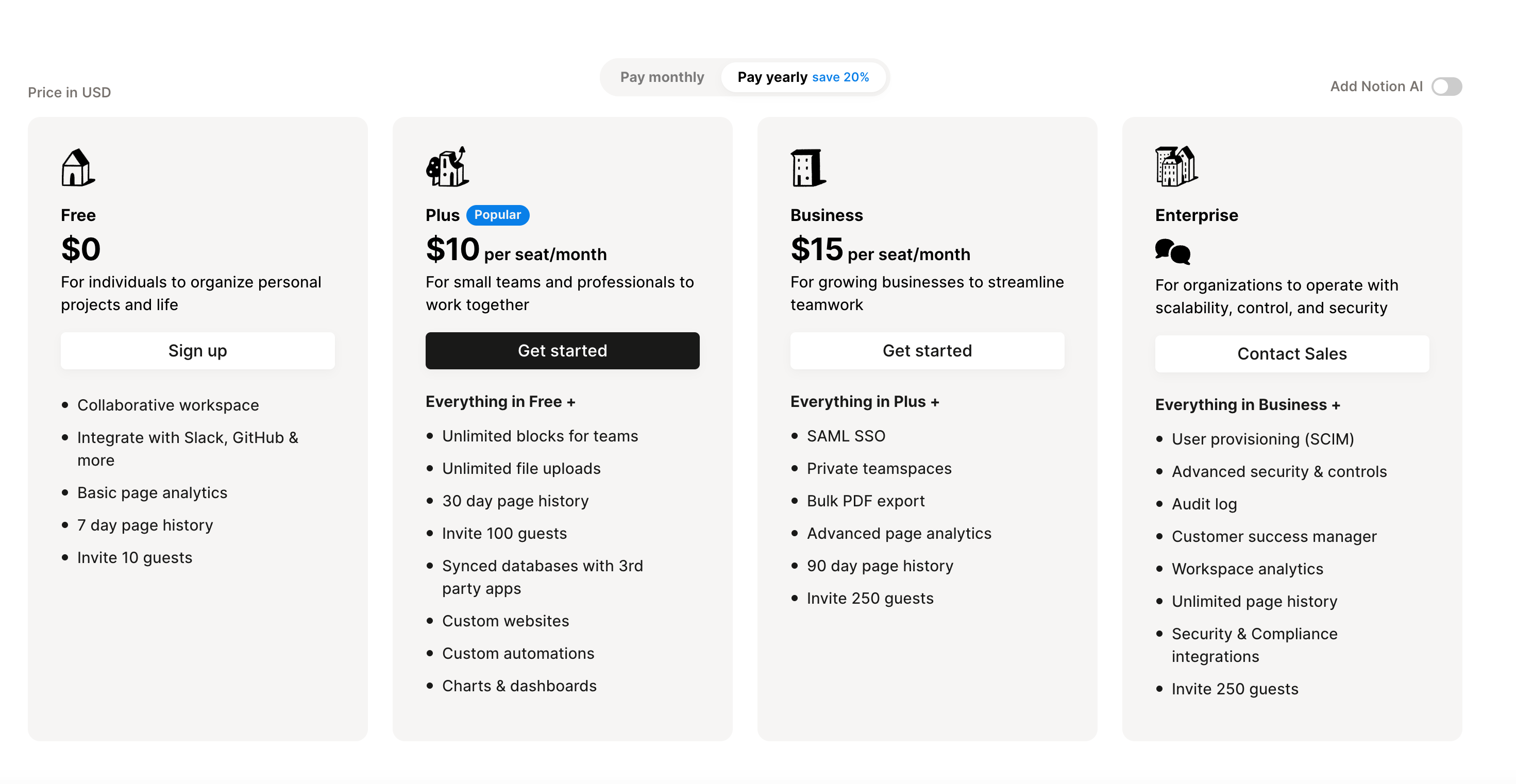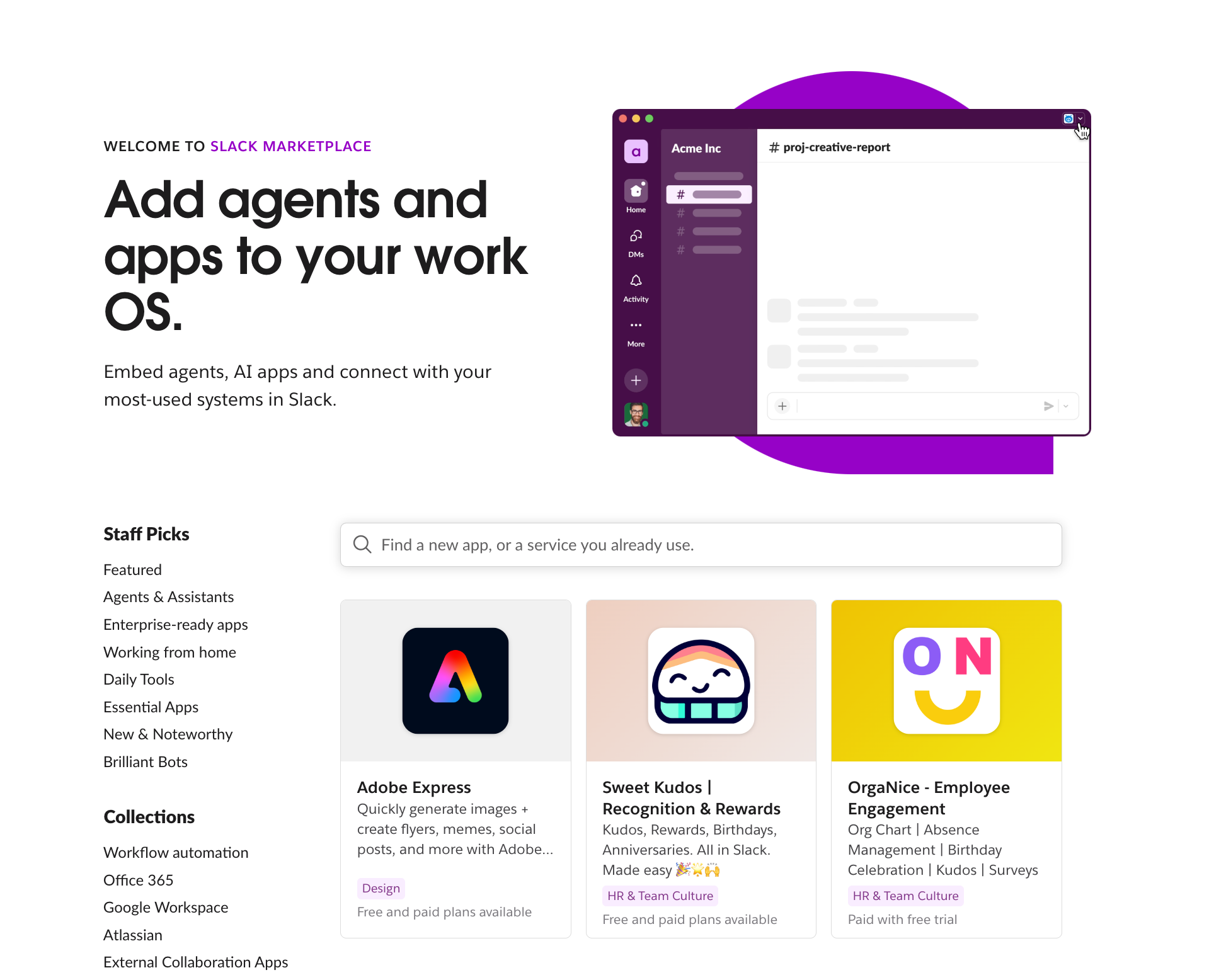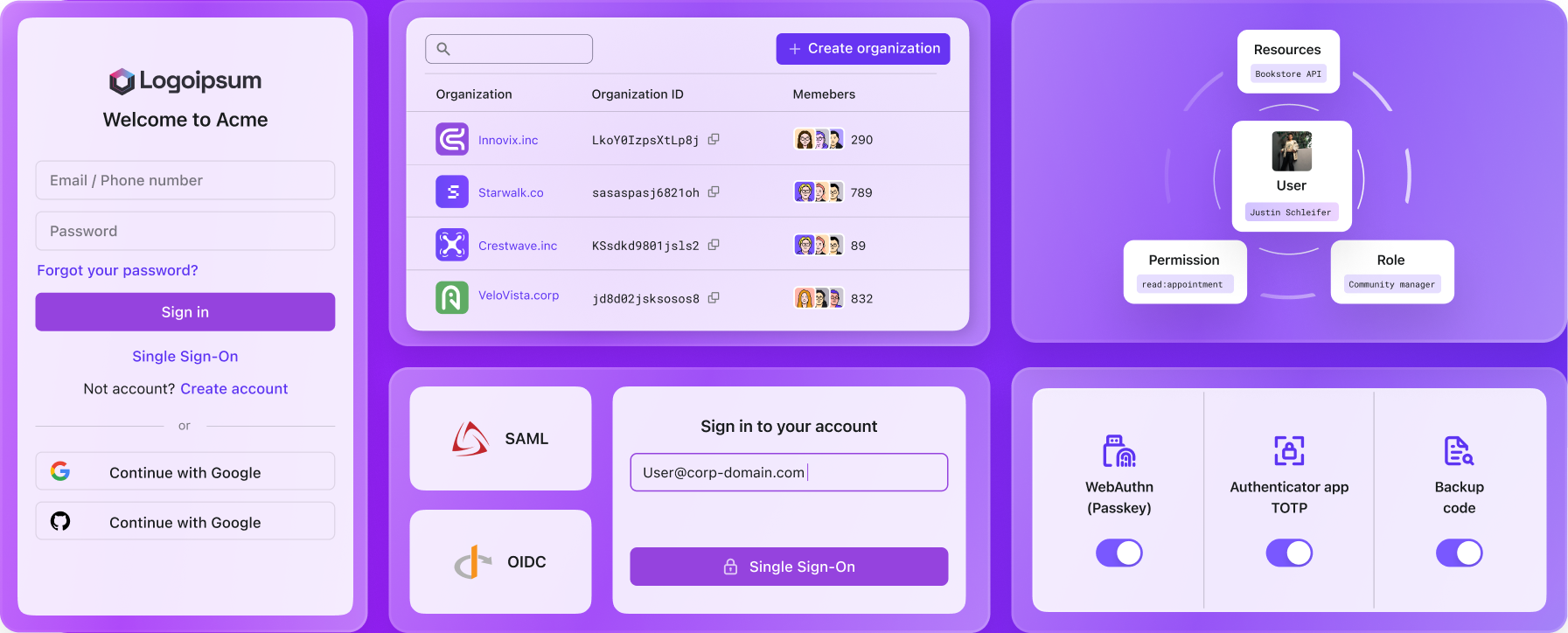What is B2B SaaS, and what will the post-SaaS era (2025+) with AI look like?
A concise guide to B2B SaaS, covering key features, metrics (MRR, ARR, CAC, LTV), and the future of AI in SaaS. Get our idea and thoughts on how AI agents and dynamic systems will shape SaaS, and why human control remains essential. Ideal for SaaS developers and AI builders.
What is B2B SaaS
B2B SaaS (Business-to-Business Software as a Service) refers to cloud-based software solutions offered to businesses, usually on a subscription basis. These tools support various business functions such as collaboration, communication, project management, and CRM.
Nowadays, B2B SaaS is no longer just a product aimed exclusively at businesses. With the rise of tool makers, AI developers, and the Product-Led Growth (PLG) model, B2B SaaS can be seen as just one stage in the product lifecycle. Many products start with a B2C model, selling to individual customers, but as they evolve, they shift towards serving groups and organizations.
This article is useful if:
- You’re new to SaaS and want to learn the basics, including what to study first to enter the field. Like the metrics we keep talking about.
- You are an AI tool builder, whether you are a designer, developer, or product manager, evaluating the infrastructure features (e.g., authentication, identity management, product architecture, payment) alongside your core AI product functions.
What are the key characteristics of B2B SaaS?
When we talk about the characteristics of B2B SaaS, it’s helpful to look at how B2B businesses have evolved. In the past, if a company needed business software, they would typically start with a project and hire an agency to build a custom solution. This model was not scalable. Today, this approach has shifted to the SaaS industry, which has a few key characteristics.
Subscription-based
SaaS is usually priced on a subscription model—monthly or annually. This ensures predictable costs and makes it more affordable for businesses to start using the software without heavy upfront investments. The model also encourages continuous improvement, as providers need to keep customers engaged to retain their subscriptions.
 A typical SaaS subscription model
A typical SaaS subscription model
Cloud-hosted
SaaS is hosted on the cloud, meaning users don’t need to worry about server management, storage, or hardware upgrades. This allows businesses to access the software from anywhere in the world, on any device, with an internet connection.
Scalable to multiple type of business
One of the greatest strengths of SaaS is its scalability. With its core fundamentals, it should be able to serve different types of businesses. Whether you’re a startup or an enterprise, SaaS products can grow with your business. You can easily add more users, integrate new features, or upgrade plans as your needs evolve. This flexibility allows businesses to avoid over-committing resources upfront while still preparing for future growth.
Multi-tenancy
SaaS platforms are usually built on a multi-tenant architecture, meaning multiple customers share the same software instance. This helps reduce costs for both the provider and customers. While each customer’s data is kept separate, everyone benefits from the same updates and security improvements. The concept of ‘multi-tenant’ can be a bit abstract at first, but if you look at popular SaaS products like Figma, Notion, or Slack, you’ll notice you’re always in a ‘Workspace.’ From a technical perspective, a ‘Workspace’ is essentially a ‘tenant’ in the system.

Security and compliance
SaaS providers take security seriously. From encryption to data backup, compliance with industry standards (e.g., GDPR, HIPAA, SOCII ), and advanced user authentication methods, SaaS platforms invest heavily in securing their customers’ data. Since data is stored in centralized, highly-protected data centers, the security measures are often stronger than what individual businesses could afford to implement on their own.
Integration
SaaS products are designed to easily integrate with other tools and platforms, allowing your product to work alongside others. This is often referred to as an ‘ecosystem.’ Whether it’s your CRM, email service, or marketing automation tool, SaaS solutions typically offer APIs or built-in connectors that make it easy to sync data and streamline workflows across different systems. This connectivity makes SaaS even more valuable as part of a larger, integrated technology ecosystem.

As AI agents are so popular in 2025, I believe SaaS products doubling down on integration and ecosystem development would be strong scenarios to multiply the existing SaaS product’s efficiency and user experience.
A few metrics b2b SaaS builders should understand
This section is especially helpful if you’re a builder but not familiar with business metrics in the B2B SaaS industry
What is MRR/ARR
MRR (Monthly Recurring Revenue)
This is the total predictable revenue a business expects to earn from its customers on a monthly basis. It helps to gauge how much recurring income is generated each month. MRR only includes the recurring portion of the revenue (i.e., subscriptions), excluding one-time payments or variable charges.
MRR = (Number of customers) x (Average revenue per customer per month)
ARR (Annual Recurring Revenue)
This is the same concept as MRR but on an annual scale. ARR gives a clearer picture of long-term revenue expectations. It’s typically used by businesses that have annual subscription plans or when analyzing revenue on a yearly basis.
ARR = MRR x 12 (or the annual equivalent of monthly recurring revenue)
Both metrics are used to track growth, forecast revenue, and measure the health of a subscription-based business.
What is Churn Rate
Churn rate is a metric that measures the percentage of customers who stop using a service or cancel their subscription over a given period of time. In other words, it tells you how many customers you’re losing.
It’s a critical metric for subscription-based businesses, especially in the SaaS industry, as it directly impacts growth and revenue.
Churn Rate = (Customers Lost During Period) / (Customers at the Start of Period) × 100
If you start the month with 100 customers and lose 5 by the end of the month, your churn rate would be:
Churn Rate = (5 / 100) × 100 = 5%
A high churn rate indicates that customers are leaving quickly, which may point to issues like poor user experience, lack of value, or competitive alternatives. A low churn rate suggests customer satisfaction and retention.
What is CAC (Customer Acquisition Cost)
CAC (Customer Acquisition Cost) is the total cost a business incurs to acquire a new customer. This includes all marketing, sales, and related expenses that go into attracting and converting a potential customer into an actual paying customer.
CAC = (Total Sales and Marketing Costs) / (Number of New Customers Acquired)
If you spend $10,000 on sales and marketing in a month and acquire 100 new customers, your CAC would be:
CAC = $10,000 / 100 = $100 per customer
CAC helps businesses measure the efficiency of their customer acquisition efforts, with lower CAC leading to higher profit from each new customer. When compared to LTV (Customer Lifetime Value), it helps determine whether customer acquisition is sustainable. Ideally, LTV should be higher than CAC to ensure long-term, profitable growth.
What is LTV (Customer Lifetime Value)
LTV (Customer Lifetime Value) is the total revenue a business expects to earn from a customer over the entire duration of their relationship. It helps measure the long-term value a customer brings to the business, factoring in repeat purchases, renewals, or subscription payments.
LTV = (Average Revenue per Customer) x (Customer Lifespan)
If a customer pays $100 per month for your SaaS product and stays with you for an average of 24 months, their LTV would be:
LTV = $100 x 24 = $2,400
LTV helps businesses assess customer value, determine if marketing and sales investments are paying off, and understand customer retention. A high LTV often indicates customer loyalty and long-term revenue generation. Additionally, knowing your LTV helps inform growth strategy by showing how much can be spent on customer acquisition (CAC) while maintaining profitability.
What is NDR (Net Dollar Retention)
Net Dollar Retention (NDR) is a key metric used to measure the growth or contraction of revenue from existing customers over a specific period, typically a year. It takes into account the expansion (upsells, cross-sells, upgrades) and contraction (churn, downgrades) within a customer base.
NDR = [(Starting Revenue from Existing Customers + Expansion Revenue - Churned Revenue) / Starting Revenue from Existing Customers] × 100
Let’s take an example,
- Starting Revenue from Existing Customers: $100,000
- Expansion Revenue: $20,000 (upsell, cross-sell, etc.)
- Churned Revenue: $10,000
NDR = [($100,000 + $20,000 - $10,000) / $100,000] × 100 = 110%
An NDR above 100% means the business is growing revenue from existing customers, even after accounting for churn. A score below 100% means revenue from existing customers is shrinking.
What are some examples of B2B SaaS, and what are their typical products and domains?
| Domains | Example products | Explanation |
|---|---|---|
| Customer Relationship Management (CRM) software | Salesforce, HubSpot | Helps businesses manage sales processes, track customer interactions, and improve client relationships. |
| Enterprise Resource Planning (ERP) systems | SAP, Oracle | Integrates core business functions like finance, HR, supply chain, and procurement into one unified platform for better operational management. |
| Project management tools | Asana, Trello, Monday.com | Helps teams plan, collaborate, and track project progress, ensuring tasks are completed on time and within budget. |
| Accounting and financial software | QuickBooks, Xero | Simplifies financial operations such as invoicing, payroll, budgeting, and tax reporting. |
| Marketing Automation | Marketo, Mailchimp | Automates marketing campaigns, lead nurturing, and customer engagement to drive growth through personalized communication. |
| Customer Support & Help Desk | Zendesk | Manages customer inquiries, support tickets, and live chat services, ensuring efficient and high-quality customer service. |
| Data Analytics & Business Intelligence | Tableau, Power BI | Data Analytics & Business Intelligence |
What features do you must have for B2B SaaS?
Many AI developers or builders often say, “I just want to focus on my product and services.” Unfortunately, if you’re working in B2B or with larger enterprises, that’s not enough. B2B SaaS platforms typically require these must-have features
| Domains | Features |
|---|---|
| Enterprise-Grade Security | Single Sign-On (SSO), Multi-Factor Authentication (MFA) |
| Role-Based Access Control (RBAC) | |
| Data encryption and compliance (e.g., GDPR, SOC 2) | |
| Administration & User Management | Flexible admin controls and user provisioning |
| Team-based permissions and settings | |
| Audit logs for tracking activity | |
| Integrations & APIs | RESTful APIs or GraphQL for custom integrations |
| Pre-built integrations with popular tools (CRM, ERP, etc.) | |
| Webhooks or event-driven architecture | |
| Reporting & Analytics | Real-time dashboards on usage and performance |
| Customizable reports for metrics and KPIs | |
| Data export and BI tool integrations | |
| Scalability & Multi-Tenant Architecture | Ability to handle multiple customers in a single environment |
| Automated provisioning and scaling as usage grows | |
| Collaboration & Workflow | Shared workspaces with roles/permissions |
| Workflow automation (approvals, notifications) | |
| User-friendly UI with collaborative features (comments, tags) | |
| Pricing & Billing | Subscription-based model with clear tiers and usage-based pricing |
| Automated billing and invoices | |
| Self-service upgrade/downgrade options | |
| Customizability & White Labeling | Options to brand the platform with custom logos/colors |
| Flexible configurations to match unique business needs |
The feature list might seem overwhelming and tedious, and you don’t have to implement everything from the start. However, better planning can make a big difference. For instance, many authentication providers offer solutions for multi-tenant architecture, MFA, and Enterprise SSO. This means you don’t need to build everything yourself.
Some examples of these providers include Auth0, Firebase, AWS Cognito, Logto, Stytch, Descope, and others.
The new paradigm: AI agents and the post-SaaS era (2025+)
SaaS can be viewed as a data table because at its core, it’s essentially a collection of structured data that needs to be organized, accessed, and manipulated efficiently. Most SaaS platforms provide users with a set of tools for interacting with this data, whether it’s for processing, analyzing, or presenting information. From a high-level perspective, SaaS is about providing users with easy, scalable access to data and operations.
The “data table” analogy highlights how many SaaS applications revolve around storing, querying, and presenting data in ways that drive value. The structure—like rows and columns in a table—helps organize vast amounts of data and offers users ways to filter and manipulate it.
At its core, these tasks can be broken down into:
- Objects
- Characteristics
- Relationships
- Actions (CRUD – create, read, update, delete) for the 3 components above
SaaS interfaces (like dashboards, forms, APIs) are simply ways to interact with these data tables.
This might sound too technical. If we look at it from a real-world perspective, SaaS operations usually involve:
- Reading data and gaining insights
- Taking actions based on that data
Before the AI era, these tasks were mostly handled by humans. For a long time, whether it was a complex CRM like Salesforce or a simpler one like Notion or Airtable CRM, SaaS builders focused on designing data tables, making them easy to use, and ensuring the interface (GUI or API) supported these tasks.
As we move into the AI era (2025+), AI agents are becoming more common. These agents are autonomous, context-aware, and task-oriented, and could change how SaaS works. Instead of static data tables, the future may include dynamic, self-optimizing AI systems.
These agents won’t just process data—they’ll understand the context, learn from new inputs, and interact with users in more intuitive ways.
The future of SaaS could look like this:
AI-Powered dynamic systems
Rather than presenting complex data structures to humans, AI could create systems that adapt and optimize based on real-time data and patterns, using Dynamic Knowledge Graphs to offer personalized insights and automated solutions.
AI Agents as autonomous operatives
Instead of users manually interacting with data, AI agents could work autonomously, making decisions, predicting outcomes, and suggesting actions based on data trends.
Not everything in the traditional model will be replaced. Some aspects are worth discussing from an ethical perspective. Here are my thoughts:
- Human Control: It’s a human’s right and human should have its own opinions to decide which parts of a process to let AI handle and which parts to keep under human control. For example, an AI agent in marketing could autonomously correlate sales data with social media sentiment and supply-chain disruptions, adjusting campaigns in real time. However, people involved in this process might lose the individual expertise needed to understand customers and gain marketing insights.
- Tools for human knowledge development: The second point is that the tool that should remain in its original form is one that helps humans structure their own knowledge and build their own LLM. These tools should not only improve efficiency but also encourage thinking, reasoning, and framing problems in a thoughtful way.
The future of SaaS is dynamic, collaborative, and AI-powered—but with humans at the helm, ensuring ethical choices and thoughtful development. Embrace these changes and stay ahead of the curve to create smarter, more scalable solutions.

